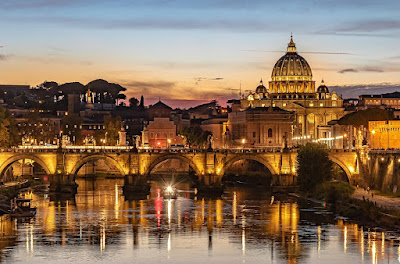Traveling for Faith: How Religion and Travel Shape Our World
Travel and religion go way back. Many religions require or encourage people to go on pilgrimages, which has led to the creation of sacred sites and booming travel industries around them. And, not only do these sites hold spiritual significance, they also bring in a lot of money. Millions of travellers visit religious sites each year, spending money on hotels, food, transportation, and souvenirs, all of which contribute to local economies.
Religion and travel have a strong bond that's been around for centuries. It continues to shape the way we explore the world and discover new things about ourselves.
Here are some figures on the economic impact of religious tourism in the four sacred places.
Makkah, Saudi Arabia: The Hajj pilgrimage to Makkah generates billions of dollars for the Saudi Arabian economy each year. According to a 2018 report by Oxford Business Group, the Hajj contributed $12 billion to the Saudi economy in 2017. In addition, the Umrah, a smaller pilgrimage to Makkah that can be performed at any time of year, is estimated to generate an additional $7.5 billion annually.
Vatican City: The Vatican is one of the most popular tourist destinations in the world, with an estimated 5 million visitors annually. According to a report by the Italian Ministry of Culture, tourism to the Vatican generated €91.6 million (approximately $110 million USD) in 2019. In addition, the Vatican Museums, which are among the most popular attractions in the city, generated over €300 million (approximately $360 million USD) in revenue in 2019.
Jerusalem, Israel: Jerusalem is a popular destination for religious tourism, attracting millions of visitors each year. According to a report by the Jerusalem Institute for Policy Research, tourism is a significant source of revenue for the city, accounting for approximately 11% of its GDP. In 2019, the city welcomed an estimated 4 million visitors, generating an estimated $1.4 billion in revenue.
Varanasi, India: Varanasi is one of the oldest and holiest cities in India, attracting millions of visitors each year. According to a report by the Ministry of Tourism, the city welcomed approximately 3.3 million domestic and international visitors in 2019. The tourism industry in Varanasi is estimated to generate approximately $32 million in revenue annually.
Religion and travel have a strong bond that's been around for centuries. It continues to shape the way we explore the world and discover new things about ourselves.
Here are some figures on the economic impact of religious tourism in the four sacred places.
Makkah, Saudi Arabia: The Hajj pilgrimage to Makkah generates billions of dollars for the Saudi Arabian economy each year. According to a 2018 report by Oxford Business Group, the Hajj contributed $12 billion to the Saudi economy in 2017. In addition, the Umrah, a smaller pilgrimage to Makkah that can be performed at any time of year, is estimated to generate an additional $7.5 billion annually.
Vatican City: The Vatican is one of the most popular tourist destinations in the world, with an estimated 5 million visitors annually. According to a report by the Italian Ministry of Culture, tourism to the Vatican generated €91.6 million (approximately $110 million USD) in 2019. In addition, the Vatican Museums, which are among the most popular attractions in the city, generated over €300 million (approximately $360 million USD) in revenue in 2019.
Jerusalem, Israel: Jerusalem is a popular destination for religious tourism, attracting millions of visitors each year. According to a report by the Jerusalem Institute for Policy Research, tourism is a significant source of revenue for the city, accounting for approximately 11% of its GDP. In 2019, the city welcomed an estimated 4 million visitors, generating an estimated $1.4 billion in revenue.
Varanasi, India: Varanasi is one of the oldest and holiest cities in India, attracting millions of visitors each year. According to a report by the Ministry of Tourism, the city welcomed approximately 3.3 million domestic and international visitors in 2019. The tourism industry in Varanasi is estimated to generate approximately $32 million in revenue annually.
Religion and travel have a strong historical relationship, with religious sites attracting millions of visitors and generating significant revenue. This is evident in places like Makkah, Vatican City, Jerusalem, and Varanasi. The bond between religion and travel continues to shape our exploration of the world and contributes to local economies.
For travel tips, trips and itineraries visit www.muzzytravels.com



